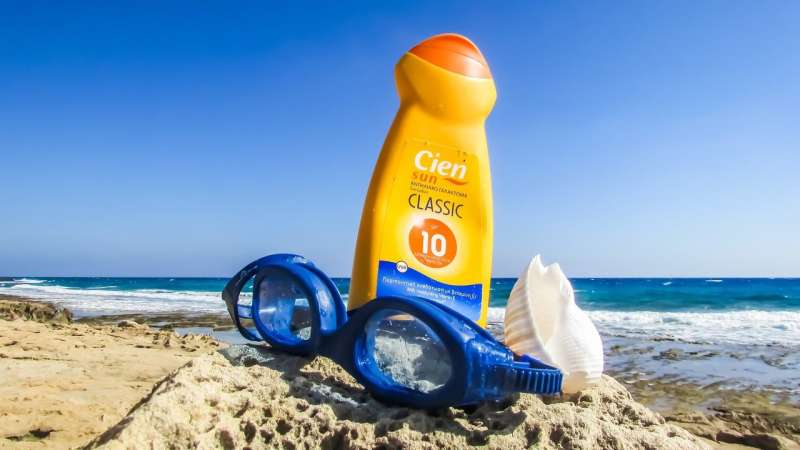There's insufficient evidence your sunscreen harms coral reefs

In the face of persistent heatwaves, Australians are reaching for the sunscreen. But you might have heard some mixed messages about its harm to the environment – specifically to coral reefs.
In July 2018, Hawaii passed a law to prohibit the future sale of sunscreens containing benzophene-3 and octinoxate, claiming these two chemicals increase coral bleaching, and have significant harmful impacts on Hawaii's marine environment.
In October 2018, the Republic of Palau followed suit, and banned "reef-toxic" sunscreens. Like most reefs throughout the tropics and subtropics, coral reefs in Hawaii and Palau have already severely bleached multiple times during recent, unusually hot summers, causing extensive loss of corals.
Key West, in Florida, may be the latest area to follow this trend, with a proposed ban to be voted on in early February.
However, medical and skin cancer specialists have warned of the public health risks of a ban on widely used sunscreens, describing the prohibition as risky and unjustified, in part because the few studies that have addressed the environmental impacts of sunscreens experimentally "are not representative of real world conditions".
For example, the way in which coral tissues were exposed to sunscreen in experiments does not mimic the dispersal and dilution of pollutants from a tourist's skin (and other sources) into reef waters and onto corals growing in the wild.
Experiments that expose corals to sunscreen chemicals typically use far higher concentrations than have ever been measured on an actual reef. A recent review of the amount of benzophne-3 in reef waters found that, typically, concentrations are barely detectable – usually, a few parts per trillion. One much higher report of 1.4 parts per million, in the US Virgin Islands, is based on a single water sample.
The environmental concerns over sunscreens on coral reefs are centred overwhelmingly on just two studies. The first, published in 2008, noted that there was no previous scientific evidence for an impact of sunscreens on coral reefs.
This study exposed small fragments of corals (branch tips) to high levels of benzophenone-3 and other chemicals by incubating them for a few days inside plastic bags. The fragments in the bags quickly became diseased with viruses and bleached. The authors concluded "up to 10% of the world reefs are potentially threatened by sunscreen-induced coral bleaching".
Bleaching is a stress response by corals, where they turn pale due to a decline in the symbiotic micro-algae that lives inside their tissues. You can make a coral bleach experimentally by torturing it in any number of ways. However, coral bleaching at a global and regional scale is caused by anthropogenic heating, not sunscreen. We know the footprint of bleaching on the Great Barrier Reef in 1998, 2002, 2016 and 2017 is closely matched to where the water was hottest for longest in each event.
Even the most remote reefs are vulnerable to heat stress. The physiological mechanisms and timescale of thermal bleaching due to global heating is very different from the rapid responses of corals to experimental exposure to high concentrations of sunscreen chemicals.
The second and most-widely cited study of sunscreen toxicity on corals is also laboratory-based. Published in 2016, it focused mainly on the responses of the day-old larvae of one coral species, as well as isolated coral cells. This study did not examine intact coral colonies.
The larvae were placed in 2-3 centilitres of artificial seawater containing a range of concentrations of sunscreen chemicals and a solvent to disperse them. After a few hours, the coral larvae became increasingly pale (bleached) with higher concentrations of oxybenzone.
This study also measured the concentration of benzophenone in sea water at six locations in Hawaii. These samples were unreplicated (one per location), and all of them had unmeasureable amounts of sunscreen chemicals. In the US Virgin Islands, the authors found higher concentrations of benzophenone at four out of ten locations, although they did not report results for any blank samples (to control for contamination). The study concluded that oxybenzone threatens the resilience of coral reefs to climate change.
In conclusion, there is actually no direct evidence to demonstrate that bleaching due to global heating is exacerbated by sunscreen pollutants. Similarly, there is no evidence that recovery from thermal bleaching is impaired by sunscreens, or that sunscreens cause coral bleaching in the wild.
Provided by The Conversation
This article is republished from The Conversation under a Creative Commons license. Read the original article.![]()



















